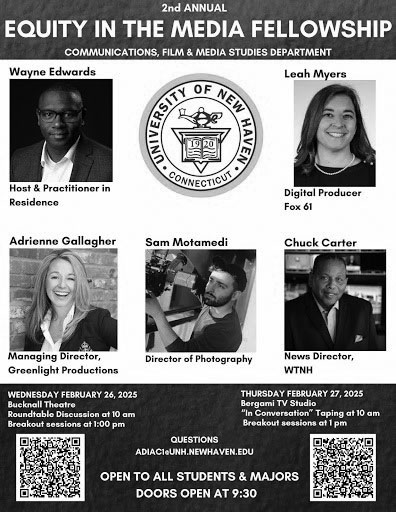Students Discuss Appropriation and Appreciation
The University of New Haven’s Beta Kappa chapter of Omega Phi Beta Sorority invited students to have a conversation about the difference between cultural appropriation and cultural appreciation on Wednesday (April 18).
Hosted by students Miranda Kovacs, Mackenzie Upshaw and Eunice Kazako, the event included a conversation about the difference between cultural appropriation and appreciation. The hosts asked what the audience thought those words meant, and while the group was hesitant to begin, it wasn’t long before the group was building definitions.
Students described appropriation as the uninformed use of elements from foreign cultures, and used examples such as runway models wearing ceremonial Native American headdresses or Khloe Kardashian being complimented on her dreadlocks, while Zendaya is insulted for them.
In the entertainment industry, dominant cultures have profited off of the works of minorities. Rock music largely resides within rhythm and blues – a genre of music that largely emerged from the African American community. Salsa and reggaeton have also been widely used in pop music.
“You see people appropriating something that other people are getting ridiculed or killed for,” University of New Haven student Kenneth Notarino-Jeffrey said.
Similarly, cultural appreciation was largely defined by the group as the informed and respectful usage of certain elements from cultures to which the artist/writer doesn’t belong. The group of students gave examples, such as Angelina Jolie visiting Pakistan while wearing a hijab as a sign of cultural respect.
One of the organizers said the conversation was much needed.
“Nobody talks about it on campus,” Kovacs said. “It’s mostly the ones that are affected by it.”
The University of New Haven is a diverse campus, and many of the conversations on race and culture are through student-run events.
The conversation included Saint Patrick’s Day, one of the most popular to culturally appropriate.
Saint Patrick’s Day has been popularized as a holiday where people consume large amounts of alcohol and paint themselves green without knowledge of the meaning behind the celebration. Saint Patrick’s day is named after a 5th century Christian missionary and bishop who would worked to convert the Irish to Christianity, an act that romanticized into him driving the snakes out of the country. St. Patrick also used the shamrock to explain Christianity’s holy trinity.
“Don’t be ignorant to a culture, do your research, appreciation of a culture is beautiful, appropriation is not,” Kovacs said.






